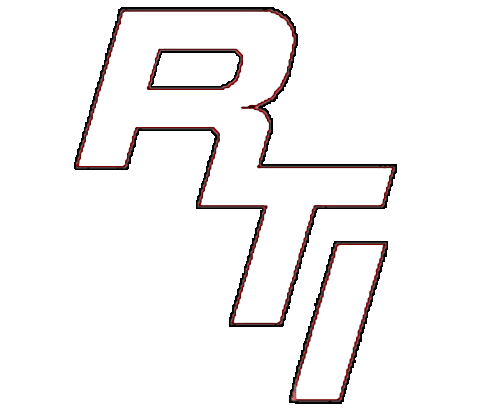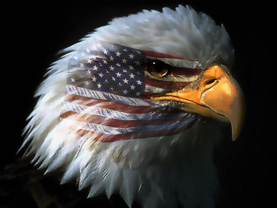

Fluids
Converter Spacing
Pinion Angle
Burn-Out, Staging, and launch Procedures
4L60E - 4L80E Trans Brake Operation
Over Flow-Catch Can Instructions
Trans Brake Connectors
Fluids
On Power-Glides the total amount of fluid, measured in quarts, That it will take to fill the transmission will approximately be the same number of inches and your torque converter. For example if you have an 8 inch converter it will take approximately 8 quarts of fluid, if you have a 10 inch converter it will take approximately 10 quarts.
On a Th400 with a 2quart after market deep pan, the total amount of fluid, measured in quarts, that it will take to fill the transmission will approximately be 2 quarts more than the number of inches of your torque converter. For example, if you have an 8-inch converter it will take approximately 10 quarts of fluid, if you have a 10-inch converter it will take approximately 12 quarts. NOTE: Transmission has approximately 1 quart of fluid left in transmission after dyno testing this will count as part of total fluid volume also if your transmission has a custom fabricated pan modified for clearance at the rear of the transmission it will have about 1 quart less capacity.
Synthetics are acceptable but not required except when running a turbo charger or using a race transmission with a lock up torque converter. Synthetic fluid is highly recommended see full synthetic notes listed below.
If you have an overdrive 4L60E-4L80E Transmission it is best to use Dexron 3,5, or 6, Mercon is recommended. Try to use a good name brand oil company, Please no economy store brands. Synthetic fluid is acceptable but not required. We recommend you don’t use a thick fluid due to the shift, and pressure solenoids.
900 HP OR LESS - Recommended Fluids See full synthetic notes listed below
Dexron3/Mercon
Racing Fluid (B & M or TCI)
Ford- Type F
50/50 Mix of Dexron 3/Mercon and Ford – Type F
900 -1,500HP - Recommended Fluids See full synthetic notes listed below
Racing Fluid (B & M or TCI)
Ford- Type F
50/50 Mix of Dexron 3/Mercon and Ford – Type F
1,500HP Or More - Recommended Fluids See full synthetic notes listed below
Racing Fluid (B & M or TCI)
Hydraulic Oil (10-20 or 10W-20 weight)
IMPORTANT NOTE: Turbocharged cars and race cars equipped with lock up converters FULL SYNTHETIC is recommended. DO NOT use hydraulic fluid. See synthetic notes below.
Full Synthetic Notes All Horsepower- Recommended Fluids if you prefer Synthetic
10-20-30 or 40 weight synthetic fluid is acceptable on all level horsepower the heavier weight fluid the better lubrication to gears and components you must use a slightly higher viscosity fluid to equal lubrication value of conventional non synthetic fluid. The less horsepower you have the lighter viscosity fluid you can use as horsepower increases so should the viscosity of the fluid. Although some turbo powered cars and cars equipped with lock up torque converters need the thinner fluid for spooling and stall speed adjustment purposes. Unfortunately this is a necessary evil that can shorten the life of the transmission planetary gears. Recommended LAT Lubricants or Gibbs Racing Fluid.
Note: Hydraulic oil is used for tractor or heavy equipment transmissions. Travelers can be purchased at Tractor Supply Company (TSC) also Caterpillar, and John Deere High Guard. Low Viscosity
Converter Spacing
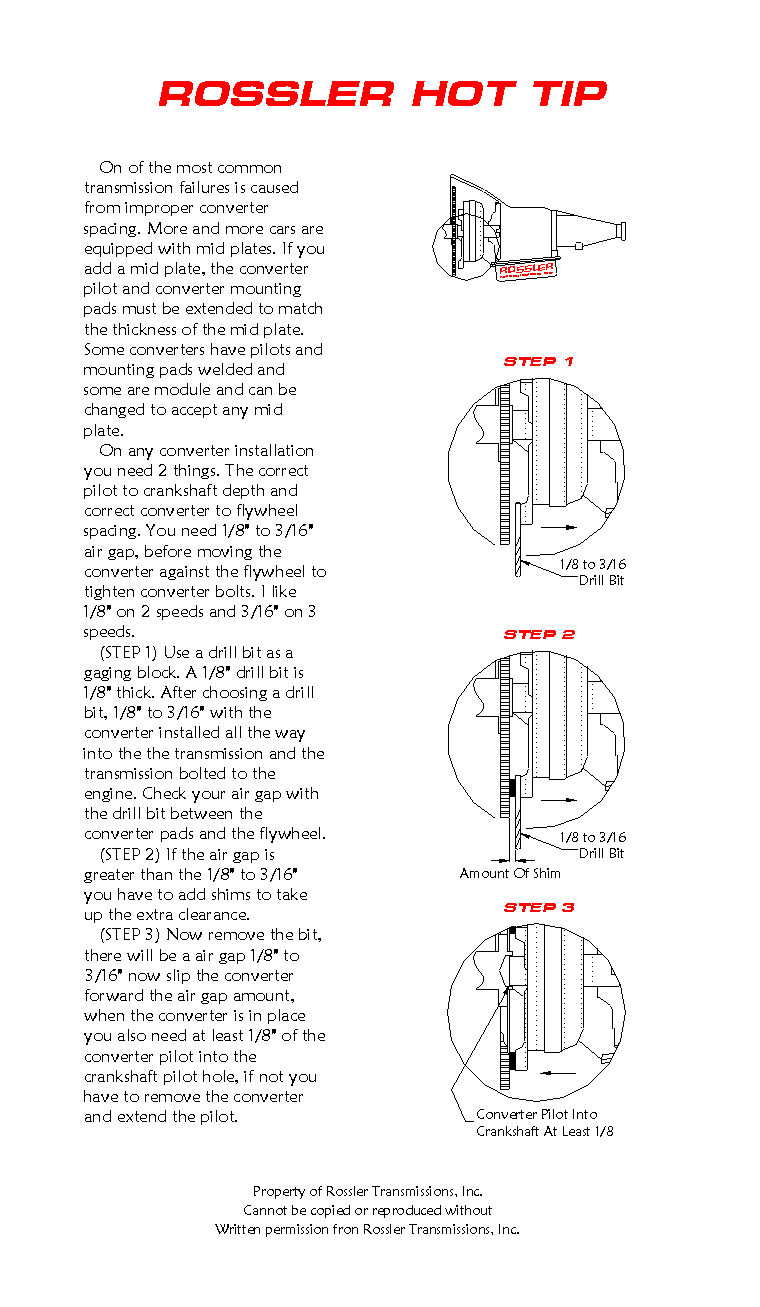
Pinion Angle
Tired of breaking cases and drive shafts? There are many books that misled you on setting the pinion angle. For Drag Racing this is simple. You are trying to set the pinion angle to be parallel with the centerline of the engine & transmission on hard acceleration. To achieve this you must first figure out the parallel setting of the rear end to correspond to the angle of the engine & transmission, then add the proper amount of pinion angle. Add 1 deg. for 4-Link vehicles, 2 to 3 deg. for ladder-bar vehicles. Place stands under suspension to duplicate vehicle at ride height. Caution do not remove drive shaft without securing vehicle first. Take measurement with drive shaft removed.
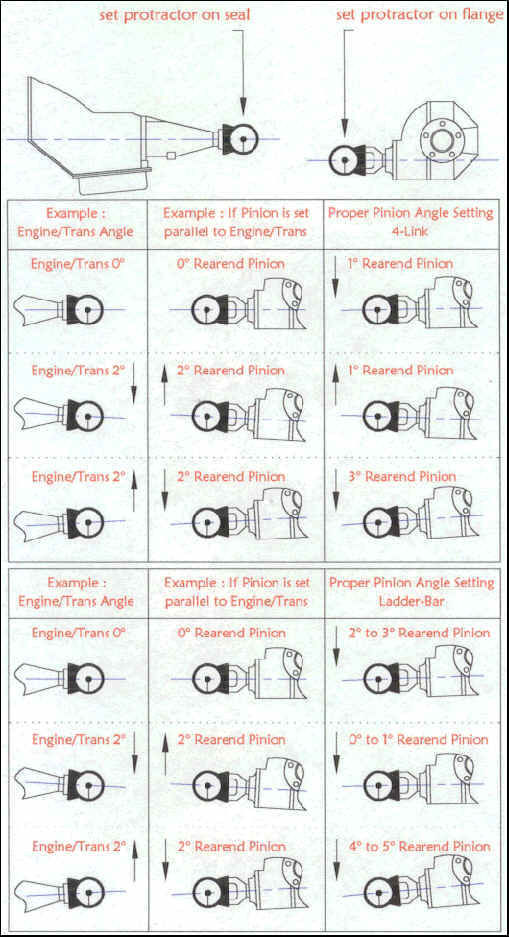
Burn-Out, Staging, and launch Procedures
Danger: Never Spool Engine in Park, Doing so Will cause serous damage to Engine and Transmission
First pull the car into the water, with a 3 speed transmission, put the car in 2nd gear, get the tires spinning then shift into high gear, this is preferred, but you can start in 1st shift to 2nd then to high gear, get into high gear as soon as possible. Pull away from the water fairly aggressively for a few feet, and then lift quickly off the throttle.
Place transmission back into 1st gear and pre-stage. When you are ready, stage the car into your racing position. Then immediately press the trans brake button, remember do not take your foot off the brake pedal wait a split second to give the trans brake time to engage.
If you are racing off the top bulb with a delay box, use the following procedure. After the car is staged and the brake is engaged Concentrate on the top bulb only When you see the top bulb flash let go of the brake button, and then hit the accelerator. By pushing the accelerator after you let go of the brake button you will save a lot of wear and tear on your torque converter, and make the transmission run a lot cooler.
Note: When you leave on the top bulb I also recommend that you put your helmet against the head rest as soon as you stage your car and leave it there until after the car leaves the starting line, this is a lot easier on your neck.
If you are going to leave on the bottom bulb, after the car is staged and the brake is engaged Concentrate on the last yellow bulb you will see the top bulb flash with your peripheral vision, when the first light flashes, hit the accelerator and then on the last yellow let go of the brake button.
Note: Always use a 2 or 3 step RPM rev limiter, most cars like RPM between 3,000 to 5,800. Find your car's sweet spot. In most application higher is not faster.
Special safety note: Never throw any 3-speed transmission into neutral when you cross the finish line, leave the transmission in high gear as you slow down. The internal parts will spin 2 to 2 ½ times faster then the trap RPM and can cause internal parts to explode and exit the transmission, this may cause injury and or death, the exit of the transmission fluid may cause fire or loss of control of the car. Always run a shield and all safety equipment mandated by IHRA ADRL and the NHRA. Safety is no place to cheap out!
4L60E - 4L80E Trans Brake Operation
Brake will function in drive position, not manual low unless you are using a Ross-Lock™ patented hybrid manual box, and be disarmed in overdrive position. Never stall engine against converter with the brake applied for more than 3 to 4 seconds. Anything over 3 to 4 seconds will overheat fluid causing damage to transmission and converter and may also cause a flash oil fire if the front seal fails. When brake is used you must have proper tire contact with pavement. (dry and clean) Never use brake unless tires are hot, sticky and in contact with pavement. Failure to do this can result in failure to internal low roller. Also never use brake as a line lock for burn out. When applying trans brake place shifter in manual 3rd drive position, depress button (DO NOT LET GO OF FOOT BRAKE) at the same time you depress the trans brake button (because line pressure at idle is set for street driving it will be between 75 and 85 PSI instead of 175 to 200 with competition transmission) the brake will need a second or 2 to apply for best results push button , hold foot brake for a 123 count. Then lift foot brake pedal. Now you are ready.
Over Flow-Catch Can Instructions
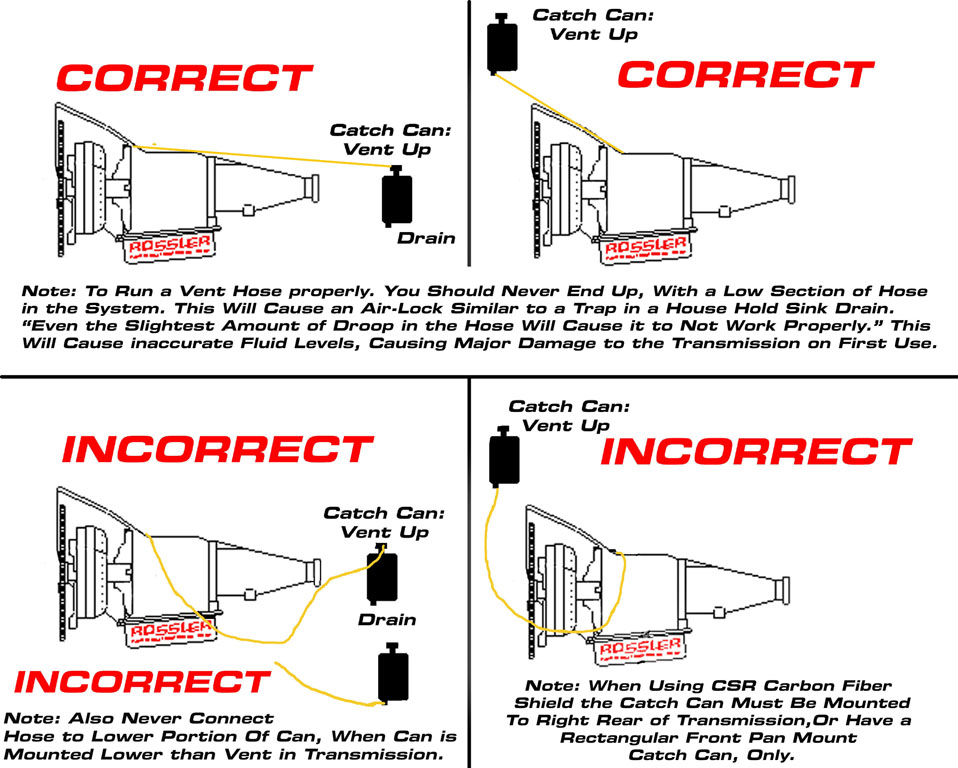
Trans Brake Connectors
When wiring your Trans Brake. Do not use the “Weather tight connectors” They do not work with high low Solenoids, they will not work with the Trans Brake solenoid.
<
>
x
Hours: Monday,Wednesday, Thursday 8:00-4:30 PM
Tuesday 8:00Am-6:00Pm Friday 8:00Am-3:00PM Phone: (330) 530-5000
Copyright Rossler Transmissions 2025

